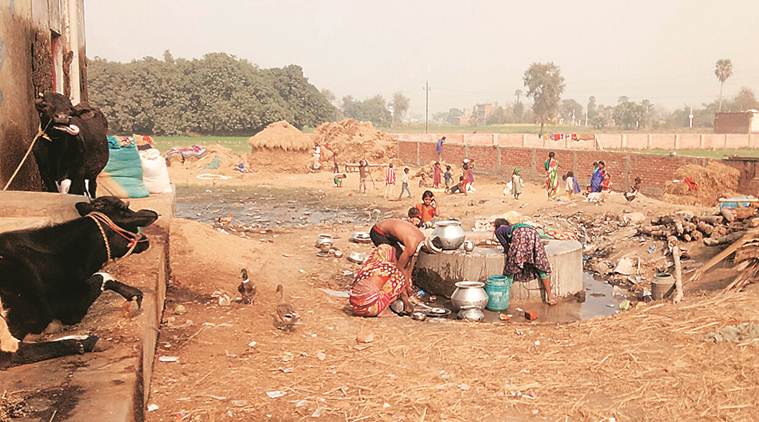
Under Leprosy Case Detection Campaign (LCDC) of the National Leprosy Eradication Programme (NLEP), funded jointly by the Centre and the state government, all people from Scheduled Caste (SC) communities across Bihar’s 38 districts — approximately 2 crore people — were surveyed for leprosy detection between January 9 and 13 this year.
Although the survey result will be published only in the first week of February, sampling of collections and initial reports indicate nearly 50,000 new leprosy cases, according to Dr Bijoy Kumar Pandey, additional director (headquarters), health services, and state programme officer for leprosy.
If that projection turns out to be true, it will be an all-time high detection of new leprosy cases in the state.
Poor living conditions lead to cases in SC households
“It is a projected figure based on initial findings of the survey. We decided to conduct the survey after our first pilot project of 12,500 SC people in Samastipur, Motihari and Munger (districts) early this year yielded 125 new cases,” said Dr Pandey, who plans to survey the entire population of the state in the next financial year.
Leprosy cases in Bihar had a prevalence rate of 0.79 (cases per 10,000 people) in 2015-16 with detection of 16,185 new cases. In 2016-17, that prevalence rate went up to 1.10 with 21,818 cases, and to 1.18 (21,353 new cases) in 2017-18.
People on the ground —- accredited social health activist (ASHA) workers, volunteers and specialist doctors —- attribute this rise to a variety of factors: unhygienic living condition, too many people living in one room and sharing the bed, and a more active search and increased level of awareness, among others.
Sandhya Devi, an ASHA worker in Naubatpur town, about 25 km from state capital Patna, where several new cases were detected in the recent round of survey, said, “If any patch or mark on the body is not congenital and does not hurt and give sensation after being pinched or pricked, it could be signs of leprosy.”
The percentage of children among the cases detected across the state was 14.20 in 2015-16, 13.70 in 2016-17, and 12.56 in 2017-18, it was informed.
Dr R K Singh, who has attended to several leprosy patients in Hajipur district, said, “One obvious reason leprosy cases are going up in Bihar is the lack of single-dose rifampicin (SDR) programme for people living in close contact of an affected patient. Lack of sanitation and general awareness of hygiene are the other reasons.”
An official associated with NLEP said lack of infrastructure is also a hurdle in the way of monitoring cases. “In some districts, such as Gopalganj, there is no NLEP staff. One non-medical staff has to look after several primary health centres (PHCs),” the official said. “Posts of leprosy consultant and physiotherapist remain vacant. Very few vacancies out of the sanctioned 434 paramedical workers have been filled. We have to depend on ASHA workers and other volunteers. We get technical assistance from four NGOs: NLR India, The Leprosy Mission, DFIT and Lepra Society.
Dr Pandey, the state programme officer (SPO) for leprosy, however, said it should not be called a rise in the number of cases. The increased numbers, he said, is due to the “active search undertaken by our sustained campaign, especially after launch of LCDC in 2015-16. We take entire Bihar as endemic.”
Asked why cases are going up despite a sustained NLEP, Dr Pandey said, “Maybe 20 per cent population was not covered under the previous survey. The people not covered could have been from SC communities.”
Dr Pandey’s predecessor, Yanteshwar Jha, denied it: “During my tenure as SPO, we conducted door-to-door search and visited SC households. Yes, the level of awareness has gone up now, but cases were duly detected during my tenure between 2011 and 2014.”
This period showed a prevalence rate between 0.89 and 1.2, Jha added.